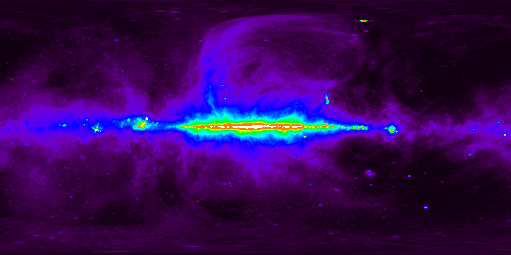LOFAR-UK radio telescope inaugurated

The first major radio telescope to be built in Britain for decades was officially opened on 20th September.
Based at Chilbolton Observatory in Hampshire, the LOFAR-UK telescope will use simple dipole antennas to ‘listen’ to the Universe at FM frequencies. It will tackle a diverse range of science problems, including detecting when the first stars were formed, revealing how black holes evolved and mapping the structure of the solar wind and its interaction with the Earth.
The new telescope is part of the European LOFAR (Low Frequency Array) project, which is creating a network of over 5000 separate antennas. LOFAR works at the lowest frequencies accessible from Earth and, combined with advanced computing, allows wide areas of the sky to be surveyed. The LOFAR antennas will eventually be grouped into 'stations' all over Europe, including the Chilbolton Observatory, to form the world's largest and most sensitive radio telescope.
Dr Philip Best, a reader at the Institute for Astronomy, is the deputy leader of the LOFAR-UK project. Dr Best said: “LOFAR’s field of view and sensitivity mean that it can survey the sky orders of magnitude faster than other radio telescopes and it has opened up huge new possibilities for astronomers.The addition of the UK station in Chilbolton doubles the level of detail we can see in the images produced by LOFAR.”
Dr Rob Fender of the University of Southampton, Principal Investigator of the LOFAR-UK project said "The most amazing thing is that these small dipole antennas can pick up faint radio signals from over 10 billion years ago, when the Universe was a fraction of its current size, and that this signal can be mapped over the entire sky by the telescope without a single moving part."

Above image shows the radio Universe as seen at 408 MHz. LOFAR will be able to see this with greater detail at even lower frequency.
The installation of the 96 radio antennas that make up the Chilbolton station was completed by scientists from a consortium of 22 British universities, including Edinburgh, together with the SEPnet consortium and the UK Science and Technologies Facilities Council, making it the largest radio astronomy consortium in the country.
The telescope was officially opened by Dame Jocelyn Bell Burnell, who discovered the first radio pulsars. During the inauguration ceremony, guests observed a pulsar in real time using the Chilbolton station.
The LOFAR project is led by ASTRON in the Netherlands, where the majority of the telescope and the data processing capabilities are located. Additional powerful international stations are located in Germany, France, Sweden andthe UK.
LOFAR-UK is funded through a collaboration of 22 UK universities with the SEPnet consortium and the UK Science and Technologies Facilities Council.
Above image shows the radio Universe as seen at 408 MHz. LOFAR will be able to see this with greater detail at even lower frequency.

